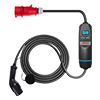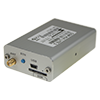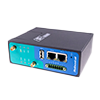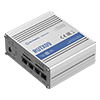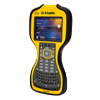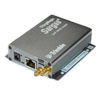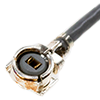Teltonika has launched a new feature called eSIM Bootstrap, delivering instant connectivity for Teltonika routers equipped with an embedded eSIM. This means that selected models (RUT2xx and RUT9xx series supporting eSIM) can connect to the internet immediately upon first startup, even without a physical SIM card or any other connectivity source. This innovation greatly streamlines deployment in the field, reduces downtime, and makes remote management possible from the very first moment. In this article, we explain what eSIM Bootstrap is, how it works, and what benefits it brings to Teltonika router users in practice.
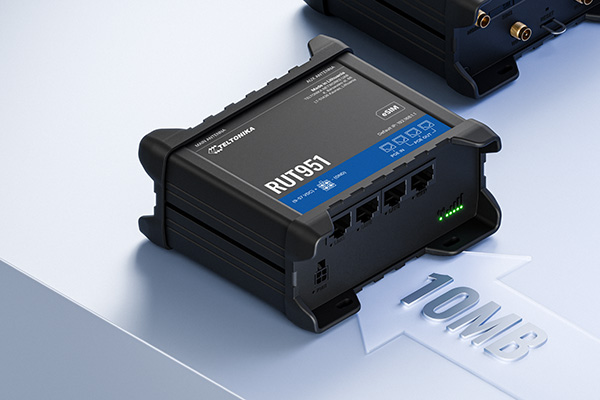
What is Embedded eSIM Technology in Teltonika Routers?
Before diving into the Bootstrap profile details, let's clarify what eSIM means in the context of routers. An embedded eSIM (embedded SIM) is a chip integrated directly into the device, replacing a traditional plastic SIM card. Unlike conventional SIMs, an eSIM doesn't need to be physically swapped-mobile operator profiles (subscriptions/data plans) can be downloaded, switched, and managed remotely via GSMA Remote SIM Provisioning. This eliminates manual handling or shipping cards to devices, simplifying logistics. Connectivity is fully software-driven; administrators can upload or update operator profiles remotely, without visiting the device. Newer Teltonika models (such as RUT241, RUT951, etc.) already incorporate eSIM technology and can store multiple profiles at once (Teltonika eSIM routers support up to 7 profiles simultaneously). Embedded eSIM also brings security benefits: it cannot be easily stolen or removed, and the profiles are stored encrypted inside the device.
What is eSIM Bootstrap and Why Was It Developed?
Despite the advantages of eSIM, there is an initial challenge: when the device is powered on for the first time, it has no active operator profile yet. To download its first eSIM profile (or to allow an admin to configure it remotely via cloud), some form of internet connection is needed. Without connectivity at startup, deployment can stall before the device is operational. Previously, manufacturers addressed this by requiring the device to be temporarily connected to the internet—either via a physical SIM, a wired network, or Wi-Fi hotspot—just to fetch the initial operator profile. This added complexity and made mass deployments (hundreds of IoT routers in various locations) harder to scale.

The solution is eSIM Bootstrap: a pre-configured starter profile that Teltonika began pre-installing in eSIM routers from October 2025 (initially in RUT2xx and RUT9xx series). This Bootstrap profile provides limited mobile data, specifically for the initial setup. As soon as the router starts, it connects to a mobile network (using supported roaming partners) and reaches the necessary servers—namely Teltonika's RMS (Remote Management System) and the SM-DP operator server, from which it downloads the full eSIM profile. eSIM Bootstrap means plug-and-play” internet: the device gets basic connectivity instantly, enabling remote configuration without any on-site intervention.
How Does eSIM Bootstrap Work?
Every Teltonika router with eSIM support now includes a factory-loaded Bootstrap profile with a limited data quota (about 10 MB), which is enough to download one dedicated operator eSIM profile. On first startup, the router checks for the Bootstrap profile; if present, it uses it to connect to the network. Bootstrap connectivity is restricted—only essential traffic (connection to Teltonika RMS, DNS, DHCP, NTP, etc.) is allowed, blocking all other data. This protects the limited data from being consumed unnecessarily, ensuring there are enough resources to complete setup. Once the router goes online using the bootstrap profile, it immediately connects to Teltonika RMS cloud platform and securely downloads the full operator profile. The process is fully automatic; if no physical SIM card is detected within one hour, the device switches to the eSIM bootstrap profile and starts connectivity setup. When the new eSIM profile is downloaded and activated, the bootstrap profile deactivates, and the router continues normal operation using the dedicated operator. (If a physical SIM is present, it will generally take precedence, so the bootstrap mode may not be used.)
Bootstrap activation can happen in two ways: either automatically (no physical SIM detected after one hour) or manually by logging into the router’s web interface at startup. In practice, users can either let the device connect automatically or log in and trigger the connection immediately as needed.
Note that the Bootstrap profile is valid for one year from production. If the device remains in storage for more than a year before first activation, the profile may have expired. In that case, standard eSIM activation using another connectivity method is needed. For typical deployments, a one-year validity is more than sufficient, and Teltonika plans to roll out this feature to all their eSIM models in the future.
How does downloading eSIM to a device work using eSIM Bootstrap in the Teltonika interface?
Benefits of eSIM Bootstrap for Teltonika router users
The introduction of eSIM Bootstrap greatly simplifies operations for users and brings a number of practical advantages:
- Instant device activation: The router can join a mobile network right out of the box, operating immediately after deployment. No lengthy initialization, meaning critical installations benefit from rapid connectivity restoration or deployment. Teltonika notes that this minimizes downtime and ensures a smooth start for every project.
- Easier large-scale deployment: For projects requiring bulk installation (smart cities, transportation systems, utilities, etc.), installation complexity decreases drastically. Bootstrap enables fast, reliable rollout across regions—technicians don’t have to install temporary SIMs or connect every unit individually. This saves time when deploying hundreds or thousands of devices, and eliminates hassles with different operators in various countries or areas (bootstrap profile provides basic roaming connectivity).
- Remote management from day one: Once the router connects via bootstrap, it is visible in Teltonika RMS (cloud management). Admins can remotely configure, upload the final operator profile, adjust network and security settings, or update firmware without being physically present. Troubleshooting and diagnostics can also be handled remotely, with zero-touch provisioning—the router is deployed and fully managed without touching the hardware onsite.
- Cost and time savings: No need to acquire and pre-install SIMs, and no on-site technician visits for initialization. The devices connect independently, accelerating deployment and easing personnel requirements. Maintenance costs are lower since most actions (operator changes, resets, updates) can be managed remotely via RMS. The embedded eSIM also reduces expenses associated with handling physical SIMs (manufacturing, storage, loss, or theft).
- Higher reliability and security: eSIM Bootstrap ensures the device never stays offline at first startup; even in remote locations lacking Wi-Fi or cable internet, as long as cellular signal exists the router initializes itself. This greatly increases overall solution reliability, so there’s no worry about unreachable network nodes. Security-wise, embedded eSIM reduces unauthorized manipulation risks, avoiding the temptation for theft or SIM removal to disrupt service. Persistent encrypted connectivity ensures continuous operation even when switching profiles or during temporary deactivation.
Conclusion
Teltonika eSIM Bootstrap represents a significant step forward in simplifying and accelerating network device management. Users get true out-of-the-box connectivity—their devices connect automatically and are ready for further setup immediately. This brings a key advantage to IoT and industrial projects where speed and reliability matter most. Teltonika plans to extend this feature to all future eSIM router models, making it a standard for upcoming products. For anyone deploying Teltonika routers with embedded eSIM, the Bootstrap profile makes setup quicker, easier, and ensures every device is online within minutes—without the need for physical SIM cards or extra connections.
If you’re interested in Teltonika routers or want more information about eSIM Bootstrap, do not hesitate to contact the distributor.


